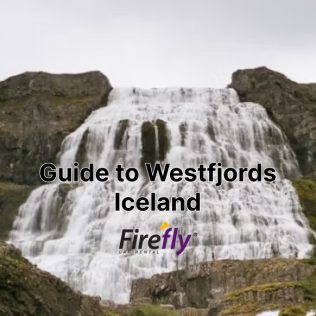Iceland’s Westfjords are a remote, off-the-beaten-path corner of this magical country. It is one of the lest populated region in Iceland, just over 7,000 Icelanders call this region of craggy fjords, isolated coves, and towering mountains home. With villages few and far between and dramatic landscapes, it’s well worth spending a few days of your Iceland itinerary exploring the Westfjords.
This is your guide to Iceland’s mystical Westfjords, including things to do, getting there, when to visit, and driving tips.
Main Attractions in the Westfjords
Látrabjarg Cliffs
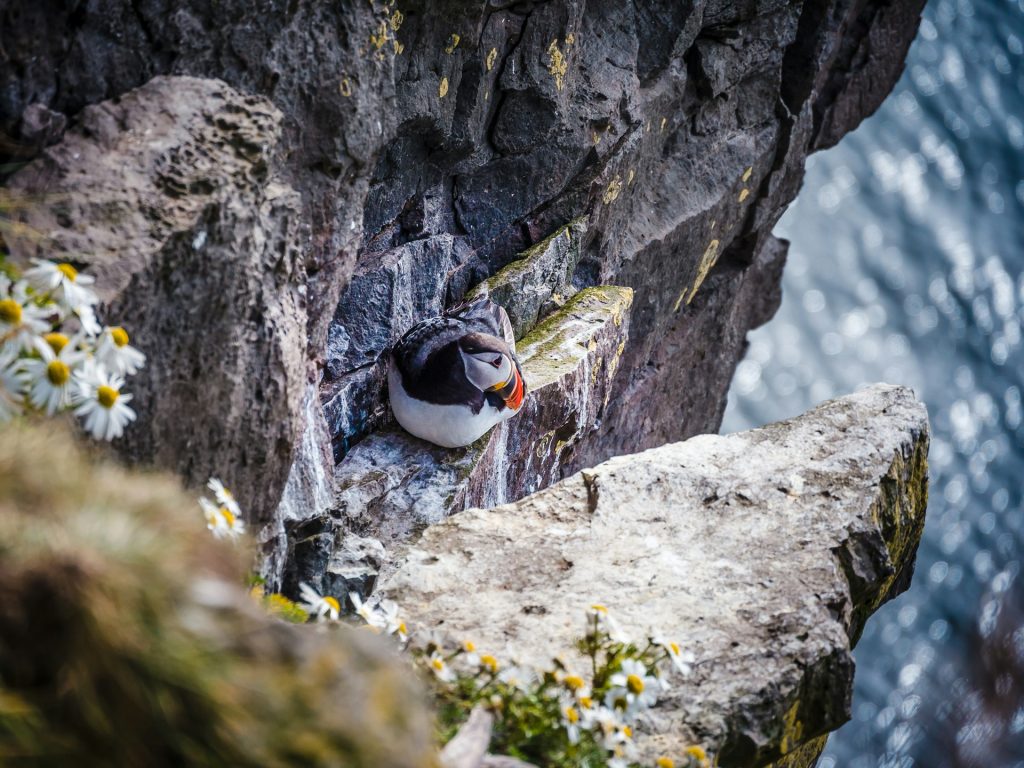
Iceland’s westernmost point, the Latrabjarg Cliffs are known for their towering peaks and rich birdlife. In fact, this is one of the best places in Iceland to see puffins during the summer months!
Photo opportunities here are endless, with dramatic, oceanfront scenery, deserted beaches, and craggy cliffs around every corner.
Location of the Latrabjarg cliffs
Dynjandi Waterfall
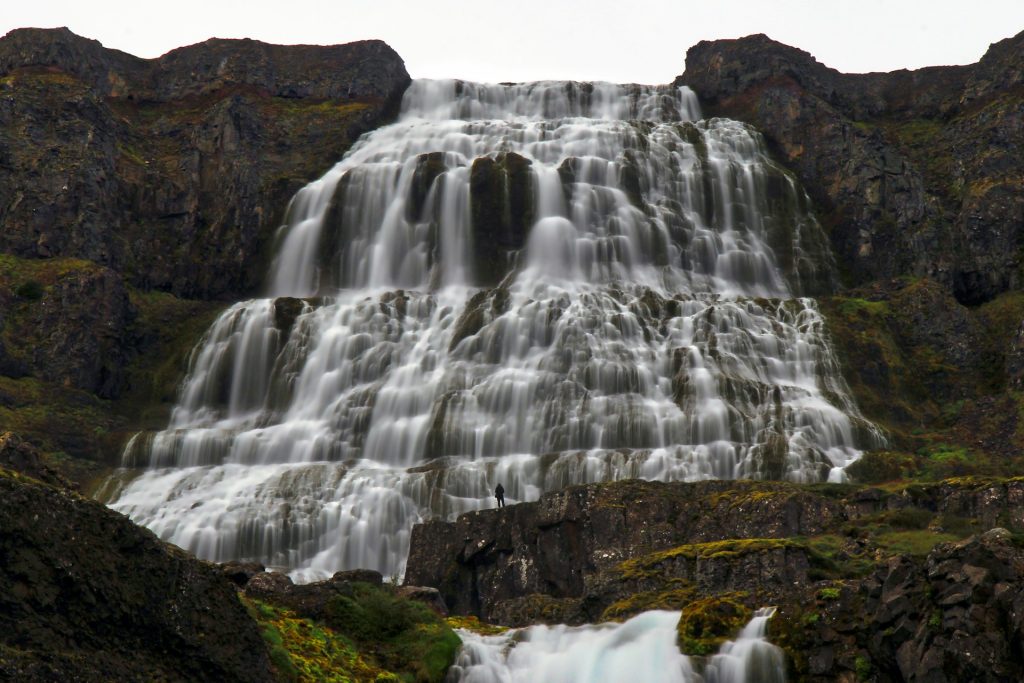
Also known as Fjallfoss, the Dynjandi Waterfall is a beautiful cascade that’s well worth seeking out on your visit to the Westfjords. A tiered waterfall, often compared to a bride’s veil, water pours from a 100 meter tall precipice, burbling its way down a craggy, moss-covered cliffside.
You’ll find several other small waterfalls in the area, all accessed via a quick, 15-minute hiking trail from the car park. The best time to visit Dynjandi is from May to October as winter weather makes the waterfall extremely difficult to reach.
Hornstrandir Nature Reserve
A pristine nature reserve that feels like it’s on the edge of the earth, Hornstrandir shows off one of Iceland’s most breathtaking landscapes. Tucked in the far northern region of the Westfjords, visitors will find plenty of hiking trails, including both short and multi-day journeys.
Hornstrandirs remote location makes it ideal for spotting unique wildlife like the arctic fox. Icelanders haven’t lived here permanently for decades, further emphasizing its secluded beauty.
Red Sand Beaches– Rauðisandur
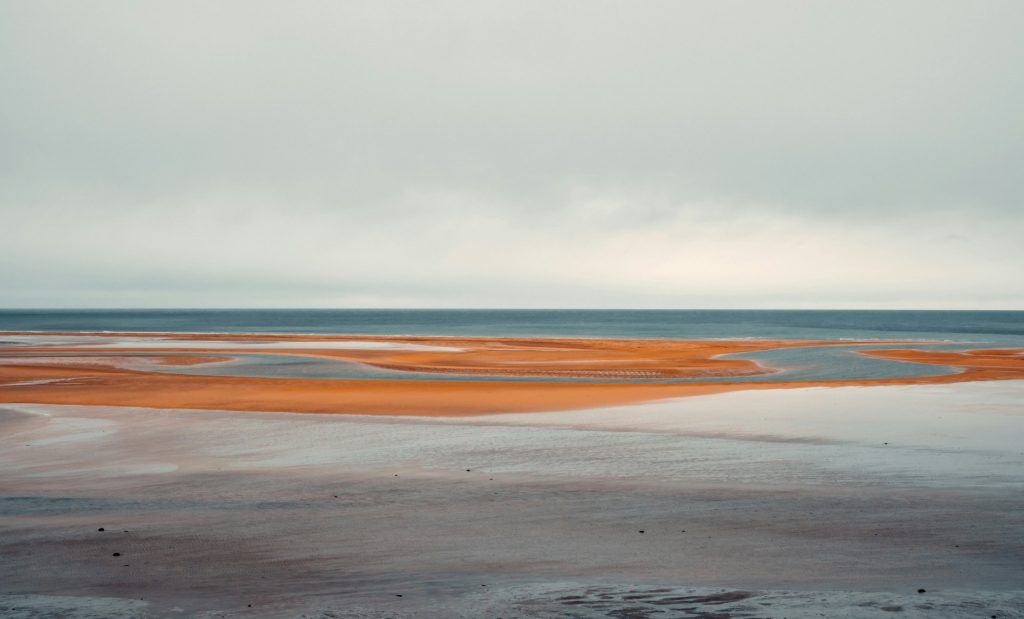
Rauðisandur, translated directly to “red sands”, is a stunning stretch of coast near Latrabjarg. The beach’s unique color comes from crushed scallop shells, giving it a vibrant hue. Scenic drives and beautiful nature walks are the name of the game here.
Another remote area of the Westfjords, it’s best to explore this area by 4×4 as most of the roads you’ll use to reach the beach are gravel with dirt.
Museum of Icelandic Sorcery & Witchcraft
Tucked on the eastern shore of Iceland’s Westfjords, the village of Hólmavik is worth a stop to visit the Museum of Icelandic Sorcery & Witchcraft. You’ll learn more about Icelandic folklore and history, with a particular focus on the country’s witchcraft, at this quirky stop.
Best Time to Visit the Westfjords
Summer Months (June to August):
The summer months are the best time to visit the Westfjords, offering the safest driving conditions and full access to this remote region. Nearly all roads, including the F-roads (mountain roads made of dirt or gravel), are open, making it easier to explore even the most secluded spots.
With extended daylight hours—up to 20+ hours of sunlight in June—you’ll have plenty of time to cover long distances, take scenic detours, and enjoy spontaneous stops along the way. The weather is relatively mild, but keep in mind that fog and sudden rain showers are still common in the fjords, especially near the coastline.
For self-drive travelers, a 4×4 vehicle is still recommended if you plan to venture beyond the main paved roads. While major routes like Route 60 and 61 are generally well-maintained, many scenic roads in the fjords remain gravel or steep, requiring careful driving, especially after rain.

Shoulder Seasons (May and September):
The shoulder seasons of May and September offer a quieter experience, with fewer tourists and stunning seasonal changes in the landscape. However, weather conditions can be unpredictable—expect rain, wind, and even occasional snow in higher-altitude areas. Some F-roads may still be closed in May due to lingering snow, while early snowfall in September can lead to unexpected road closures.
Driving in the Westfjords during these months requires extra preparation. It’s essential to:
- Check road conditions daily on the Icelandic Road Administration website.
- Choose a 4WD vehicle, as gravel roads can become slippery and small landslides or rockfalls are more likely after heavy rain.
- Be flexible with your itinerary, as sudden weather changes may require rerouting.
For travelers comfortable with a bit of uncertainty, this is a great time to visit. The fall colors in September are breathtaking, and May is one of the best months for spotting puffins along the Látrabjarg Cliffs.
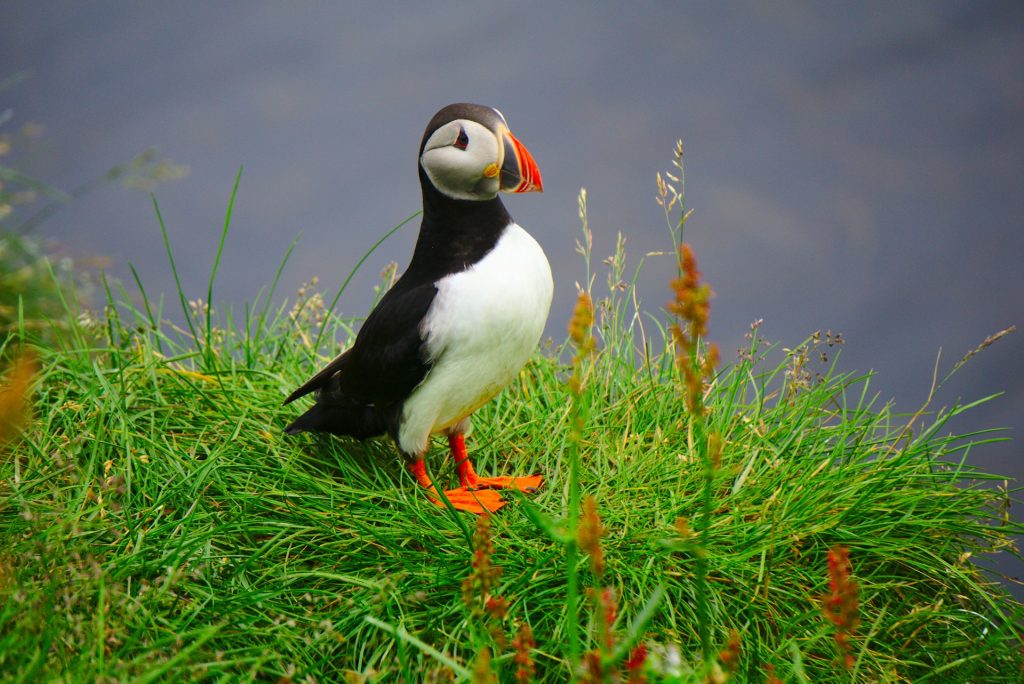
Winter Visits (October to April)
We generally don’t advise that visitors make their way to the Westfjords in the winter. Winter travel is extremely difficult due to harsh weather and road closures, which make driving difficult and even impossible.
Many roads become impassable, and frequent snowstorms, strong winds, and icy conditions make driving dangerous.
- The main roads (Route 60 and 61) may be open, but large sections become treacherous due to ice and snowdrifts. Some remote villages are only accessible by air in winter.
- F-roads and smaller gravel roads are completely closed and won’t reopen until late spring.
- Car rental restrictions apply—many rental companies do not allow winter travel to the Westfjords due to the risks involved.
If you must visit in winter, flying to Ísafjörður and exploring locally by guided tour is the safest option. Driving on your own is not recommended unless you have experience with Icelandic winter roads, studded tires, and emergency navigation in extreme conditions.
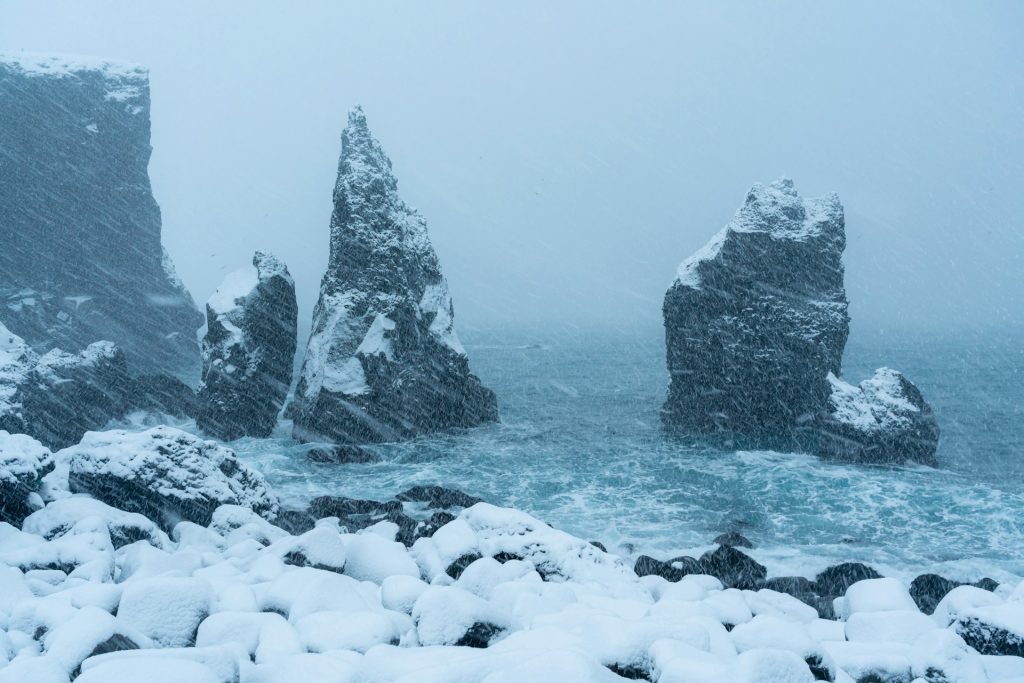
How to Get to the Westfjords
Driving from Reykjavik
The best route from Reykjavik to the Westfjords is via the Ring Road (Route 1) northward, then turning left onto Route 60 at Bifröst. Depending on your destination, you’ll also use Route 61, 63, or 62.
- Expect a mix of paved and gravel roads. While sections of Route 60 and 61 are paved, many roads in the fjords remain gravel, narrow, and winding, making travel slower than expected.
- Driving distances are long. Even though the Westfjords look close on the map, the mountains and fjords force drivers to take indirect, coastal routes, significantly increasing drive time. Reykjavik to Ísafjörður, for example, takes 6+ hours by car.
- Fuel stations are few and far between. Always fill up your tank in major towns like Borgarnes or Hólmavík before heading into the more remote areas.
Ferry Option (summer only)
A great alternative to driving the full distance is taking the Baldur Ferry from Stykkishólmur to Brjánslækur, cutting drive time significantly.
- The ferry operates from June to September and takes 2.5 hours.
- You can bring your rental car onboard, allowing you to continue exploring by car once you reach the fjords.
- Optional stop at Flatey Island: You can hop off for a few hours to explore this small, charming island before continuing to Brjánslækur.
If you prefer a more scenic and relaxing journey, this is a fantastic option! However, ferry tickets sell out quickly in peak season, so advance booking is highly recommended.
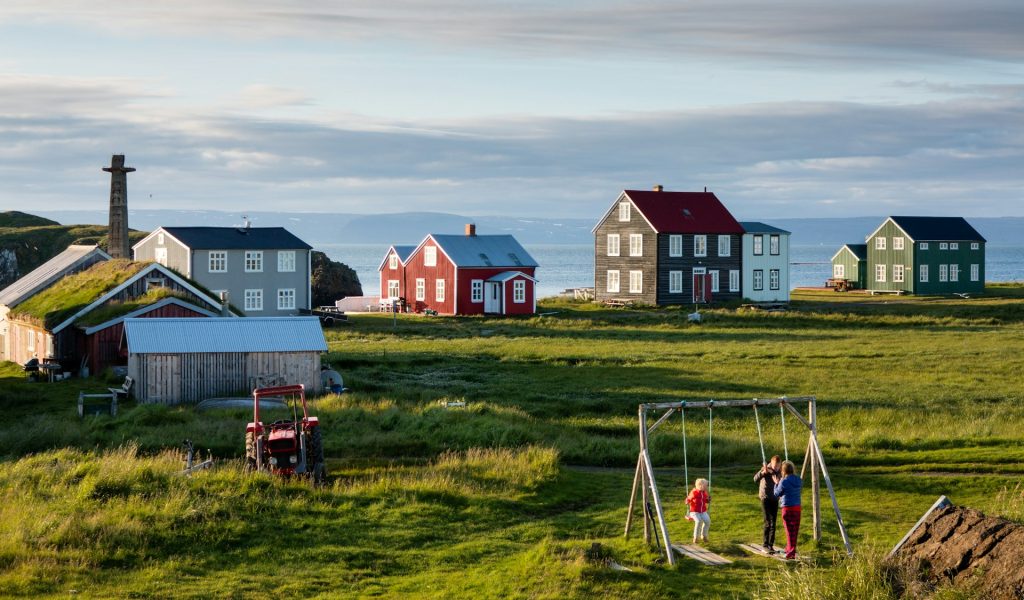
Recommended Rental Cars for the Westfjords
SUVs or 4WD Vehicles
A 4WD or high-clearance SUV is highly recommended for visiting the Westfjords due to rough terrain, steep inclines, and unpredictable road conditions.
- Gravel roads: Many main routes transition between paved and gravel, and loose stones can be dangerous for low-clearance cars.
- F-road access: If you plan to explore beyond major villages or reach places like Rauðisandur, a 4WD is essential.
- Weather unpredictability: Heavy rain can make gravel roads muddy and slippery, and sudden storms can create challenging driving conditions, especially in spring and fall.
A 2WD car is possible if you’re sticking strictly to paved roads, but you’ll miss out on some of the best sights. Renting an SUV ensures a smoother, safer trip with more freedom to explore.

Tips for Driving in the Westfjords
Navigating Gravel Roads and Steep Terrain:
Roads in the Westfjords can be precarious with many routes tucked along sheer cliff faces and unpaved roads common.
- Drive slowly and carefully on gravel roads to avoid losing control.
- Expect steep mountain passes with no guardrails—reduce speed and stay alert.
- Be cautious of blind summits, where you won’t see oncoming traffic until the last second.
Weather Awareness
Always check official weather (vedur.is) and road conditions on Iceland’s official websites before heading out.
- Fog and sudden rain can reduce visibility—use headlights at all times.
- If a road is marked IMPASSABLE, do not attempt to drive it!
Travel Preparedness
It’s a good idea to pack essentials like food, water, and more as amenities can be limited in the Westfjords due to the area’s sparse population.
Why Choose Firefly Iceland for Your Westfjords Adventure
Firefly Iceland offers affordable rental cars, flexible booking options, and reliable 4WD vehicles that are perfect for tackling the rugged terrain of the Westfjords.
Whether you’re planning to stick to main roads in a budget-friendly SUV or need a rugged 4×4 for off-the-beaten-path adventures, Firefly has a well-maintained fleet to suit your needs.
For a worry-free, budget-friendly road trip, book your rental car with Firefly Iceland and explore Iceland’s most untouched region at your own pace!
